The very first Longines ‘Aerochronometer’ was invoiced on the 30th of November 1928 to Longines-Wittnauer and pictured in Weems Air Navigation book of 1931. It now rests in the Smithsonian, absent its crown, with the ultimate owner being none other than its original designer and architect, Philip Van Horn Weems.

The name heralded from Harold Gatty, the man described by Lindbergh as the ‘Prince of Navigators’, who originally used the term Aerochronometer to describe a timing device which offset aircraft speed inaccuracies when making navigational observations.
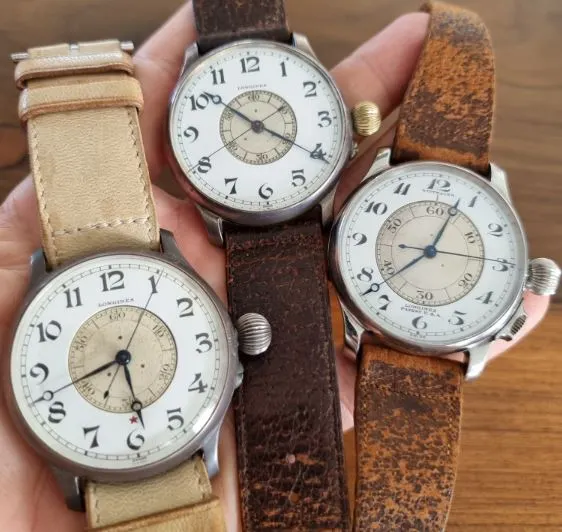
A famous navigator in his own right, Gatty’s fame grew with his incredible 1931 round the world flight success with Wiley Post. He collaborated with Weems on navigational equipment and went onto run Weems navigation training facility in San Diego.
The watch requirements had been developed with the Aircraft squadron’s battle fleet.
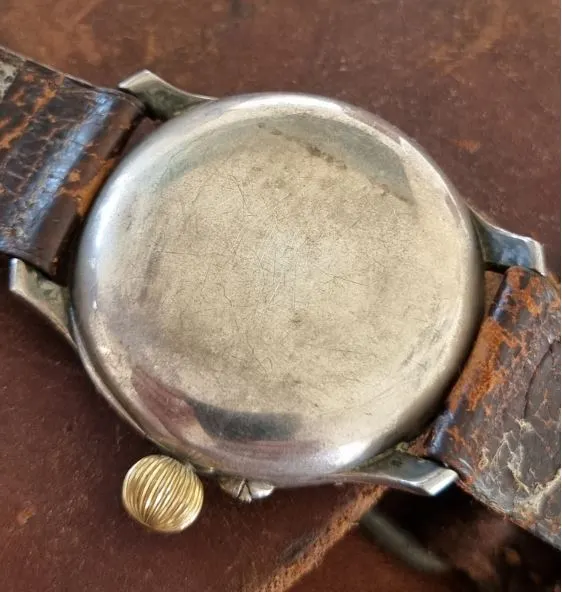
Rear Admiral Moffett, who was the chief of the Bureau of Aeronautics for the US Navy Department stated, “The suggestion… as to a moveable second-hand dial is considered to be a very valuable one, greatly facilitating the process of keeping a clock set to the exact time.”[1] Developed specifically for aviators with the Aircraft squadron’s battle fleet, it was officially designated as a “second setting navigation watch”[2] by the U.S Naval Observatory. It was later distributed by them to the US Naval air stations and fleet along with filling private and government orders for the next twenty odd years.

The central chapter on this new Longines Weems model allowed for the exact second to be set, relative to the hour and minute hands. The inner chapter ring disc could be rotated in either direction to gain an additional accuracy of +/- 30 seconds by using a radio signal or other known exact timepiece. Before 1928, watches were used with sextants for celestial calculations and accurate only to one minute.

This very first Longines Weems Second-setting watch in an all-silver case, with serial number 3585867 can likely claim to be one of the two most important pilot watches in history, the other being Lindbergh’s first hour-angle prototype with a turning bezel.
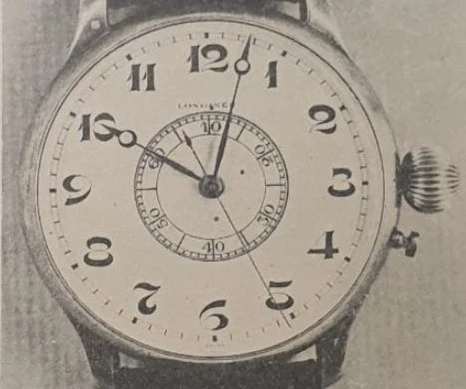
Originally invoiced to Wittnauer on the 30 November 1928, it’s development and evolution was shaped by the man most responsible for conquering the challenges of 1920’s air navigation and beyond. Weems witnessed the first trans-Atlantic crossing by the US Navy’s ‘Nancy’ seaplane division in May 1919 whilst stationed on one of the navy ships below. This was described in the following passage.
“Twenty-five hundred feet below on board a station tracking ship, a young navigator, Lt. Cdr. Philip Van Horn Weems, U.S. Navy, gazed up and thought there must be a safer and simpler way than using a small armada of ships as beacons for the flight. Lt. Cdr. Weems, a brilliant, inventive and determined young man knew as he tracked that first flight that navigation was his destiny”.[3]

The air navigation techniques of dead reckoning, and pilotage were dramatically improved with the introduction of radio’s so called BBC pips, by Sir Frank Dyson, in 1924. Weems Second-setting ideas were first brought to life after modifying a Patek Philippe and Hamilton torpedo boat watch. These first two pieces were used by Weems whilst training Lindbergh in air navigation techniques and their present whereabouts are unknown. Waltham Vanguard pocket watches were also used to accommodate his ideas prior to the creation and arrival of the improved 47mm Longines second-setting wristwatch version.
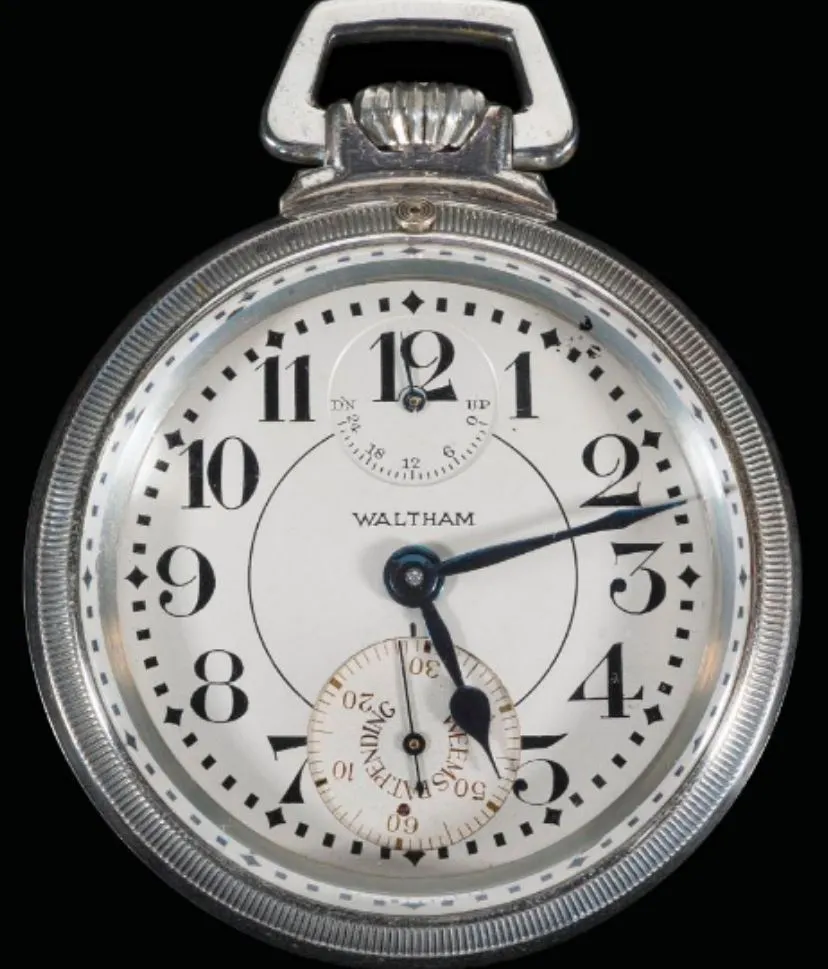
The modifications were done using the brilliant technician, Mr Dadisman, of Jessops Jewellers fame, in San Diego. There were a number of formative pieces in the development of the Longines Second Setting watch. This included Weems, his adjustable-rate clock ideas published in 1928, the Patek and Hamilton torpedo boat postproduction modified watches, the Longines technical department headed by Alfred Pfister and their dual time ‘Touran’ pocket watch which utilized a turning inner chapter. The other essential playmaker was the brilliant John Heinmuller who acquired the nickname ‘Aero One’.
His role at Wittnauer, the American agent of Longines, shaped, helped record and time the records of aviation’s golden age. An innovative instrument creator, he was ably assisted by the brilliant technical head Pfister in St Imier who brought these technical ideas to life.
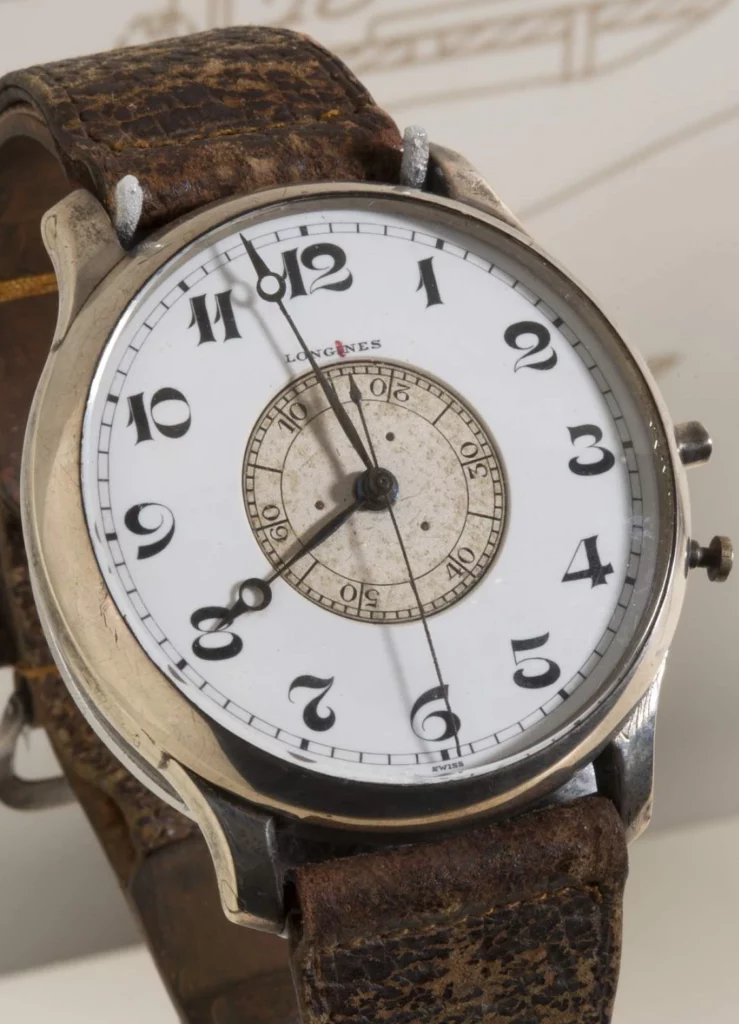
It is important to note that Longines had already developed dual time pocket watches for the Egyptian and Turkish markets using a modified 18.69N calibre first patented in 1911. Their own archive records clearly note the repurposing of Turkish 18.69N pocket watch movements destined for the agent Nacib Djezvidjian.

These Turkish pocket watch movements were made more than a decade earlier than the delivery of the very first Weems. They were repurposed by Longines and used in the production of these first two Weems prototypes with serial number (3585867 and 3585868).
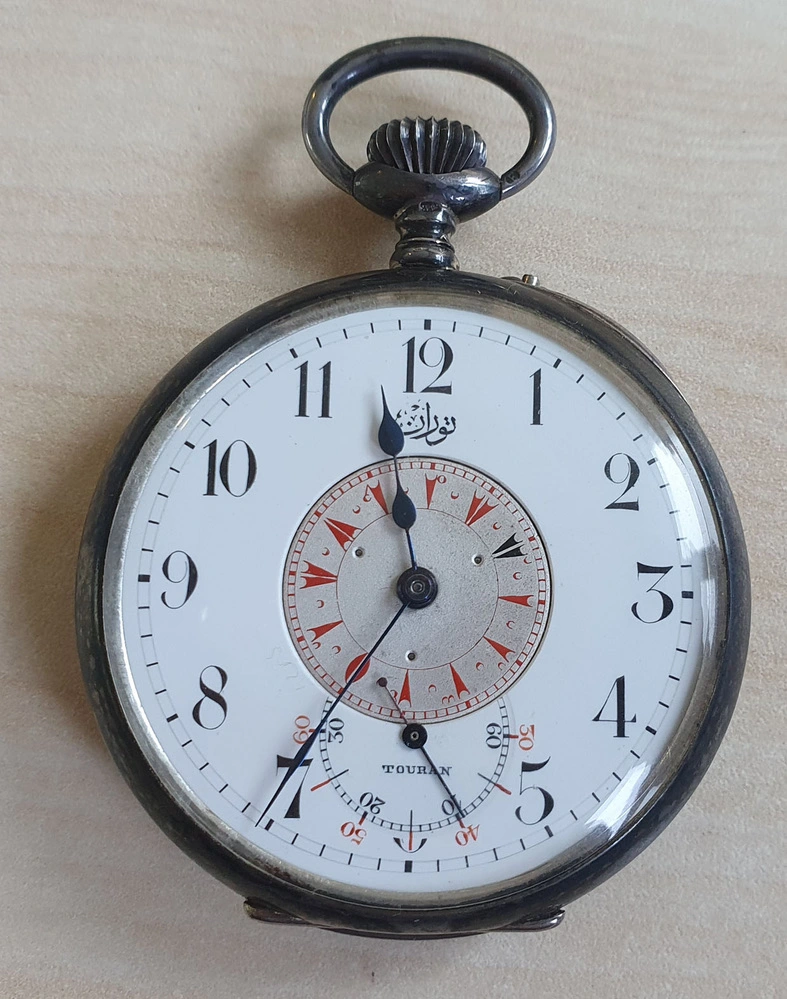
Two Turkish dual time pocket watch models used modified pin set 18.69N pocket watch movements with extra gear wheels. The first, with an inner dial had two time zones, two sets of hands, and the second pocket watch, signed Touran, featured an 18.5mm dual time turning inner chapter that mirrored the exact size of the turning disc of the prototype Weems pieces
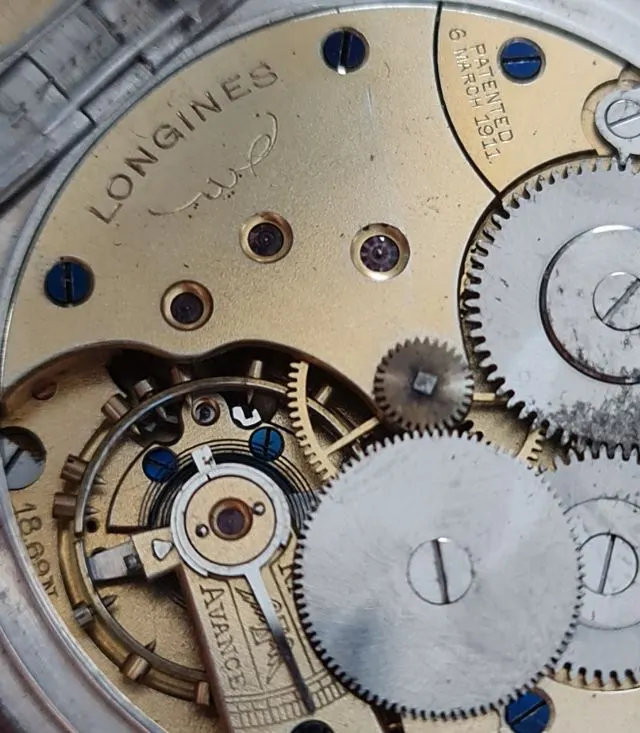
Both pocket watch models are essential formative pieces in the evolution of the Longines 47mm Weems and the Touran lies in the Longines Museum.
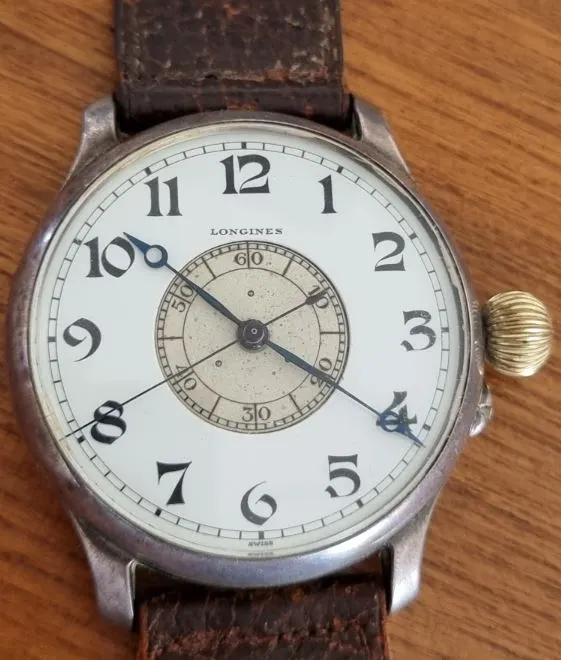
Weems actual watch, the first made was invoiced and delivered to the American agent Wittnauer. The confirmation that it is his watch comes from the unique chapter ring and the picture found in the first edition of Weems Air Navigation book published in 1931 where reference is made to it being Weems actual ‘Aerochronometer’.

The second piece made, was the very first Weems piece ever delivered outside America, and the watch was invoiced to the UK agent Baume, on 21 June, 1930.
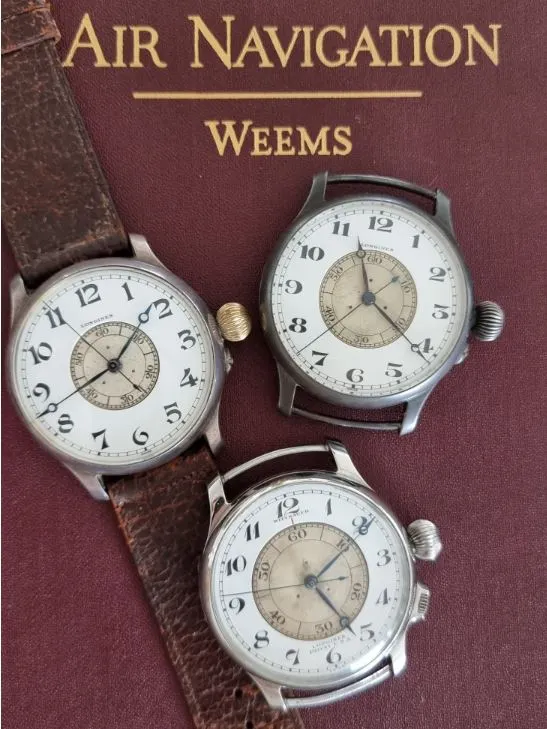
The first two Weems prototypes have a number of unique qualities.
Both use an experimental 18.5mm chapter ring that is noted in the archives. This mirrors the inner chapter size of the Turkish dual time Touran pocket watch.
The experimental test production models delivered April 10, and May 2, 1930, (including Lindbergh’s two Weems Hour-angle prototype pieces) all used 21mm chapter rings.
The size was later increased to 25mm in 1938 with the introduction of the 37.9 calibre.
Whilst we have no movement and lug profile picture of Weems actual watch, piece #2 has a movement stamped Patented 6 March 1911 that points to the repurposed dual time Turkish pocket watch movement from which they heralded. Both prototype pieces have consecutive serial numbers that are more than 10 years prior to their production and delivery in the 1928 and 1930.

The archives note both prototypes used repurposed Turkish pocket watch movements with the patent stamp date mirroring that seen on the dual time Turkish pocket watch pieces.
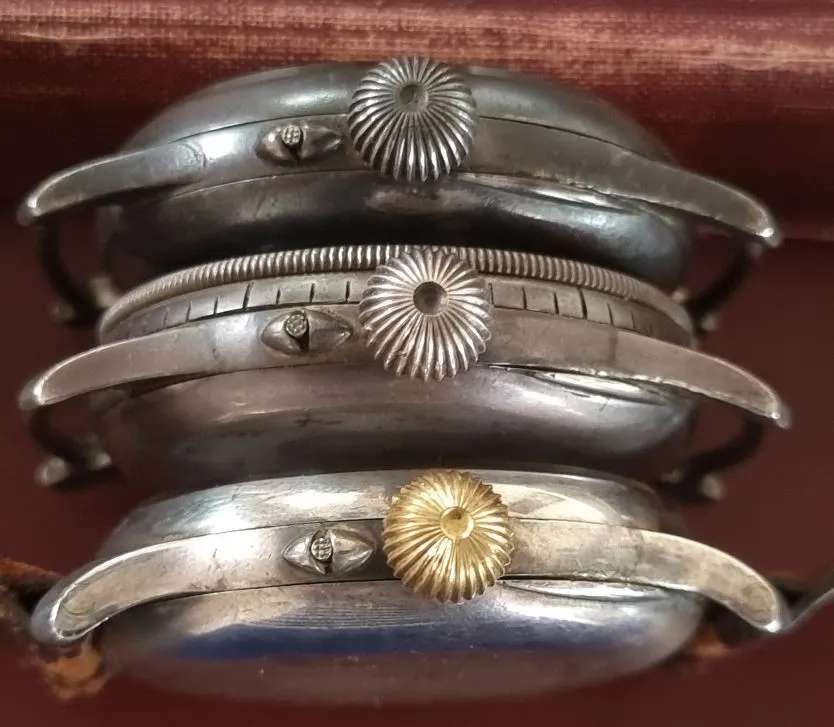
Further, the lugs on 3585868 are much thicker and have much more downward curvature. This can be contrasted with the flatter lug profile production models of both the 1930 Weems and end 1931 Hour-angle production pieces.

Moreover, archive notes Dorage Rouge on this Baume delivery. Given the nickel silver finish on the 18.69N movement of this piece, the reference is most likely to the gilded crown featured on the watch.
This differs to 1930 et al production Weems and Hour-angle models that followed with a silvered crown. Weems actual watch in the Smithsonian is missing its crown and also missing a Longines archive entry that notes being ordered or being supplied to the watch’s creator.
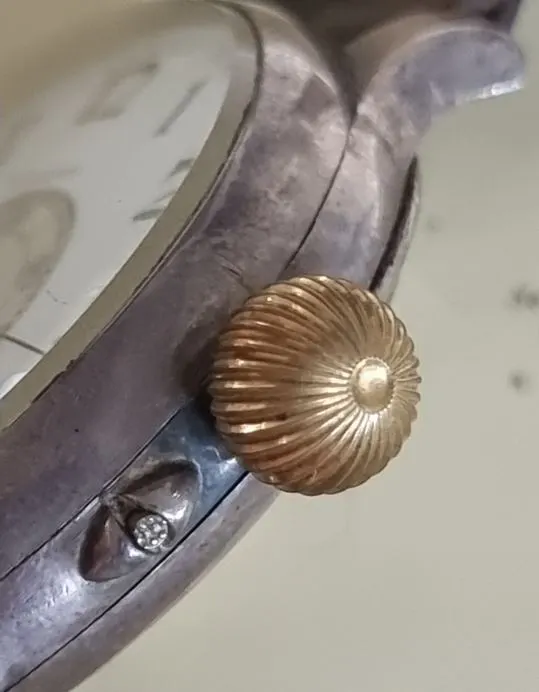
The case hallmarks on the silver case of this second piece feature the following: a silver 925 stamp, AB for (Arthur Baume), an O which denotes the year 1929 and the other symbol recognizes imported silver along with a “1” stamp on the left of the case. The watch incredibly features its original pigskin strap and solid silver hallmarked buckle.

The hallmarks on it note the maker, EY Pearson & Son (mark registered in 1914), along with a London hallmark for 1929 and the Lion’s head stamp of the London assay office. Essentially meaning, the original buckle for the piece was made in London in 1929.
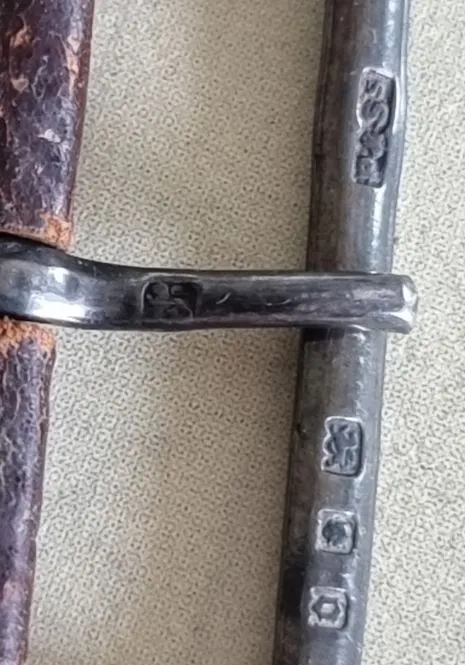
Another significant point of interest concerning this second prototype piece concerns Longines cliché picture for this reference. The earliest pieces originally carried no reference, and Longines archives note a 1931 invoice to Perusset the South American agent of a Weems model 2106/5350 – the latter a cliché or picture number.

The Longines heritage department note they only have one archive cliché picture for the large 47mm Weems 18.69N reference in their archives. First and foremost, this cliché pic features a watch with the smaller 18.5mm chapter ring.
Secondly, the font on the first two pieces is different and the watch in the cliché pic features the same font as piece #2.
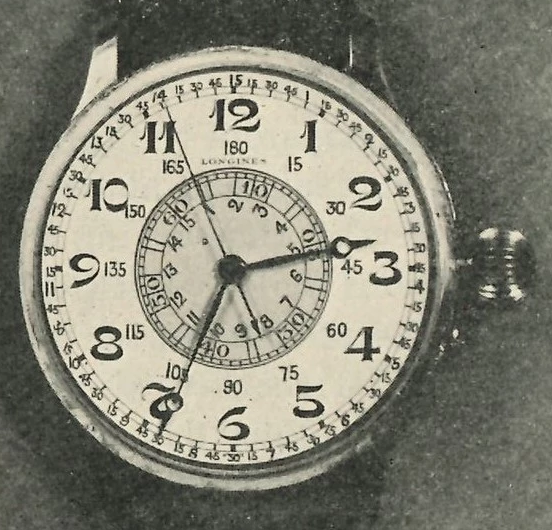
All the first test production models ordered in 1929 and delivered in April and May 1930 all feature 21mm chapter rings. This includes the two special Hour-angle/Weems hybrids delivered to Lindbergh in the same order.
Therefore, there is an extremely high degree of probability that the Longines Weems cliché picture has actually come from the second prototype piece with serial 3585868.
Given the large 47mm Longines Weems unique and incredible development, its historical significance to aviation’s golden age and the real-life aviation heroes who used them, its importance cannot be overstated.
The who’s who of aviation would soon rely on a Longines Weems time piece or the improved Hour-angle creation that followed to help conquer the challenges of air navigation.
The creator who likely has claim to be called the grandfather of the GPS system created aviation’s pen-ultimate and most important tool watch upon which aviators and aviatrixes’ lives depended. Weems techniques and teachings lasted for almost three decades and celestial air navigation skills are returning in US Navy training courses in the event that the world goes dark.
Miraculously, the 92-year-old prototype that was the very first of its kind delivered outside America to England in June 1930 wrote its own chapter of aviation history. At some point in its life the watch was likely owned by a Millard Lee Rice of the US Navy.
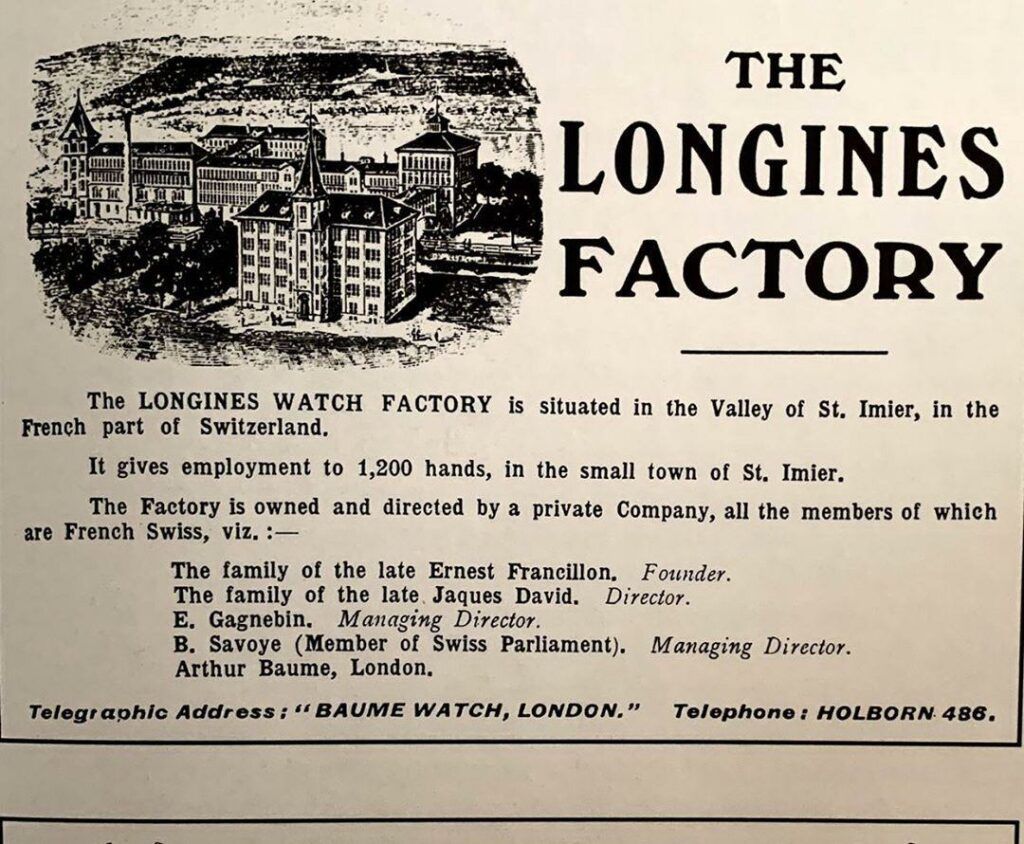
A Weems Air Navigation book marked US Avigation, the original Longines box, and a US document case belonging to the airman who likely owned it was later collected from the owner below by the winner of the small UK auction.
At the time of collection, it was noted that the owner a US serviceman was based at Netheravon in Wiltshire and carried on a relationship with her great Aunt, a spinster during WWII.
The consignor’s recollection noted that his role was training UK personnel with Harvard aircraft prepping them for Spitfire sorties. The watch itself features in the TV program ‘Flog it’ above. Discoveries as to the historical importance of this Weems and its unique qualities were made in the years following its resale and with the help of Longines archives and museum.

It should be noted that P.V.H Weems was the ultimate owner of the very first Longines Weems prototype ever made. The watch was pictured in his Air Navigation book (first edition of 1931), and today, this watch lies in the Smithsonian. Incredibly, the ultimate recipient was not noted in Longines amazing archives.
Similarly, Lindbergh’s aircraft calotte, which was actually the world’s very first hour-angle timepiece, delivered in February 1929, and two Longines Hour-angle/Weems prototype wrist watches delivered to him in 1930, also lack comprehensive records in the archives concerning the ultimate recipient.
Ongoing discoveries in this space help colour the evolution of Longines remarkable ownership of aviation history’s most important pilot watches and the characters who owned them.
[1] Air Navigation, Weems 1931 p401
[2] Air Navigation, Weems 1931 p401
[3] Weems & Plath, Weems & Plath Thermometers, Weems & Plath Hygrometers, Weems & Plath Barometers, Weems & Plath Weather Stations (weathershack.com)
